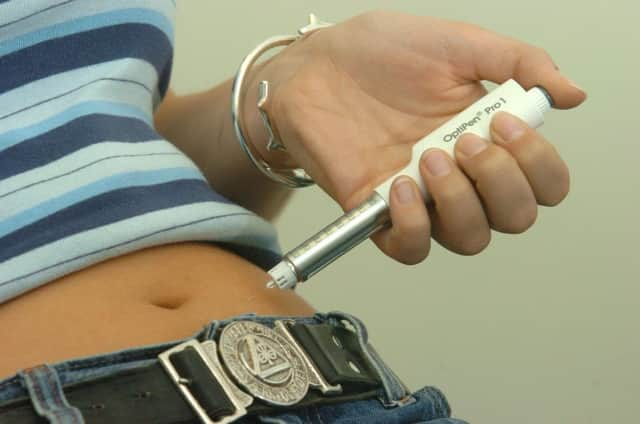Scientists find '˜diabetes hope' in mystery molecule


The autoimmune disease occurs when the body cannot produce insulin to regulate blood sugar levels, so people with Type 1 diabetes have to regularly inject themselves with insulin to avoid devastating complications.
Type 1 patients have four molecules in their pancreas that are attacked by their immune system but a fifth molecule – known as Glima – has perplexed scientists for more than 20 years.
Advertisement
Hide AdAdvertisement
Hide AdResearchers from Lincoln University have now identified this molecule as Tetraspanin-7, which could help researchers to understand a person’s immune response. The team is searching for ways to block the immune attack so they can prevent Type 1 diabetes from developing.
Dr Michael Christie, a reader in the university’s School of Life Sciences, said: “Evidence from both animal studies and human trials indicate that Type 1 diabetes may be prevented in individuals at risk, and a number of therapies to interfere with immune responses have proved effective in preventing disease development in animals and in slowing the loss of insulin-secreting cell function in human patients.
“There is now a focus on the development of procedures to interfere specifically in immune responses that cause Type 1 diabetes, and it is therefore essential that we gather as much information as possible about the major targets of autoimmune responses.
“We already had some knowledge about the physical properties of ‘Glima’ but its molecular identity has for many years proved elusive.
“We can now exploit this knowledge for diabetes prediction and immunotherapy.”
There are more than 29,000 Scots living with the condition, which is not linked to lifestyle factors such as diet or exercise.
Peter Jones, Scottish chairman of the Type 1 charity JDRF, said: “This study is an excellent example of scientific detective work.
“Dr Christie’s team have tracked down another key molecule that can be targeted by the misfiring immune system to recognise and destroy vital insulin-producing cells.
Advertisement
Hide AdAdvertisement
Hide Ad“At JDRF, we’re excited to be supporting the next stage of this team’s research, building on the discovery so we can get ever closer to new ways to cure, treat and prevent type 1 diabetes.”
The charity recently launched a major drive to increase funding for type 1 research in Scotland.